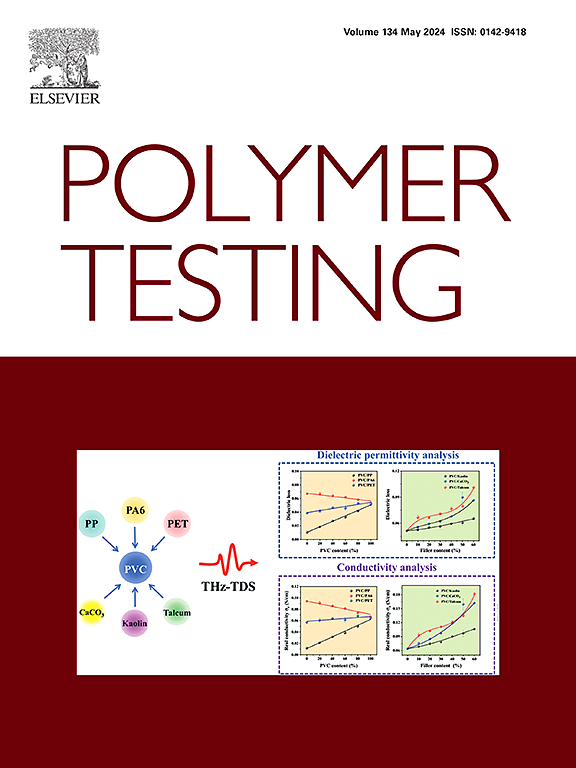Gamma-irradiation induced nonconventional fluorescence enhancement in silicone foams
IF 5
2区 材料科学
Q1 MATERIALS SCIENCE, CHARACTERIZATION & TESTING
引用次数: 0
Abstract
An unexpected fluorescence enhancement phenomenon in silicone foams induced by gamma-irradiation is reported. These materials contain no traditional luminophores. The fluorescence intensity increases with the absorbed dose (within 1000 Gy). Time-dependent density functional theory (TDDFT) calculations suggest that the mechanism is a crosslinking-enabled emission process, which is enhanced by gamma-irradiation. The fluorescence changes are visible and can even applied to distinguish irradiated silicone foam samples with absorbed doses less than 25 Gy, achieving sensitive visualization of gamma-irradiation damage. The potential applications for radiation damage self-reporting and information encryption are demonstrated. The fluorescence intensity shows similar trends with radiolysis gas products (typical aging parameter) in early-stage irradiation, which can represent radiation-induced crosslinking and radiolysis respectively to reveal the changes of materials after low dose irradiation from two aspects. This work could broaden the application of nonconventional fluorescent materials and help understand the effects of low-dose radiation on silicone materials.
γ辐照诱导有机硅泡沫的非常规荧光增强
本文报道了伽马辐射在有机硅泡沫中引起的一种意想不到的荧光增强现象。这些材料不包含传统的发光团。荧光强度随吸收剂量增加而增加(在1000 Gy以内)。时间依赖的密度泛函理论(TDDFT)计算表明,该机制是一个交联激活的发射过程,该过程由伽马辐射增强。荧光变化是可见的,甚至可以用于区分吸收剂量小于25 Gy的辐照硅胶泡沫样品,实现对γ辐照损伤的敏感可视化。论证了其在辐射损伤自报告和信息加密等方面的潜在应用。荧光强度与辐照初期的辐射溶解气体产物(典型老化参数)的变化趋势相似,可以分别代表辐射诱导交联和辐射溶解,从两个方面揭示材料在低剂量辐照后的变化。这项工作可以拓宽非常规荧光材料的应用,并有助于了解低剂量辐射对有机硅材料的影响。
本文章由计算机程序翻译,如有差异,请以英文原文为准。
求助全文
约1分钟内获得全文
求助全文
来源期刊

Polymer Testing
工程技术-材料科学:表征与测试
CiteScore
10.70
自引率
5.90%
发文量
328
审稿时长
44 days
期刊介绍:
Polymer Testing focuses on the testing, analysis and characterization of polymer materials, including both synthetic and natural or biobased polymers. Novel testing methods and the testing of novel polymeric materials in bulk, solution and dispersion is covered. In addition, we welcome the submission of the testing of polymeric materials for a wide range of applications and industrial products as well as nanoscale characterization.
The scope includes but is not limited to the following main topics:
Novel testing methods and Chemical analysis
• mechanical, thermal, electrical, chemical, imaging, spectroscopy, scattering and rheology
Physical properties and behaviour of novel polymer systems
• nanoscale properties, morphology, transport properties
Degradation and recycling of polymeric materials when combined with novel testing or characterization methods
• degradation, biodegradation, ageing and fire retardancy
Modelling and Simulation work will be only considered when it is linked to new or previously published experimental results.
 求助内容:
求助内容: 应助结果提醒方式:
应助结果提醒方式:


